Gyeongsang Cuisine: Flavors of South Korea’s Eastern Region
Introduction
When it comes to South Korean cuisine, many people are familiar with popular dishes like kimchi and bulgogi. However, the culinary landscape of this vibrant country is rich and diverse, with each region offering its own unique flavors and specialties. One such region is Gyeongsang, located in the eastern part of South Korea. In this article, we will take a delicious journey through the Gyeongsang cuisine, exploring its distinctive dishes and the cultural significance they hold.

Table of Contents

A Taste of Tradition: Gyeongsang’s Culinary Heritage
Preserving Culinary Heritage Through Generations
Nestled within the heart of South Korea, the Gyeongsang region boasts a culinary heritage that echoes through time. From the bustling markets to the humblest kitchens, the flavors and traditions of this land have been meticulously preserved, offering a tantalizing glimpse into the past while embracing the present. The art of preserving Gyeongsang’s culinary heritage is a labor of love, a dedication to safeguarding the essence of a culture through the conduit of food.
Read more on South Korea: Joseon Cuisine and Its Cultural Significance
Main Ingredients: The Pillars of Gyeongsang Cuisine
At the foundation of Gyeongsang’s cuisine lies an array of essential ingredients that define its character.
Fresh Seafood Delights: With its coastal location, Gyeongsang’s bounty from the sea plays a pivotal role in its culinary identity, infusing dishes with a briny freshness that can only come from the waters of the region.
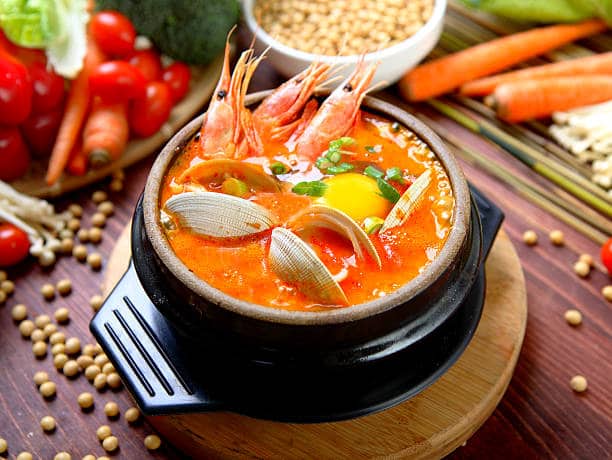
Rice: The Staple of Gyeongsang Cuisine: Rice, the lifeblood of Korean cuisine, takes center stage in Gyeongsang’s culinary landscape, forming the canvas upon which its flavors are painted.
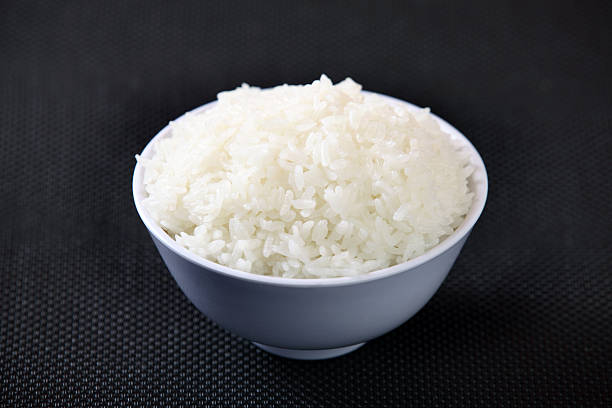
Signature Dishes: Flavors that Define Gyeongsang
Gyeongsang’s culinary story is narrated through its signature dishes, each carrying the essence of the region’s history and culture.

Deonjang Jjigae: A Hearty Fermented Soybean Stew: This rustic stew embodies the heartiness of Gyeongsang’s cuisine, with its deep, umami-rich flavors that are the result of careful fermentation.

Gyeongju Ssambap: Wraps of Flavor and Texture: A tactile experience that celebrates variety, ssambap is a feast of fresh vegetables, grilled meats, and vibrant sauces wrapped in leaves.


Milmyeon: Spicy Noodle Dish with a Kick: Milmyeon’s fiery kick and chewy noodles embody the boldness of Gyeongsang’s flavors, leaving a lasting impression.

Ssuk Guk: A Soup Celebrating the Earthy Mugwort: This humble soup pays homage to the land with its use of mugwort, an earthy herb that adds a unique depth to the dish.

Unique Flavors: Balance of Spicy, Salty, and Umami
Gyeongsang’s culinary heritage is a harmonious dance of flavors—spicy, salty, and umami—creating a symphony of taste that tantalizes the palate.
Alongside spiciness comes the touch of saltiness, carefully woven into the culinary tapestry. Salt, a universal seasoning, is harnessed to perfection in Gyeongsang’s cuisine, enhancing flavors and preserving ingredients. Its presence elevates the overall taste profile, contributing a balanced contrast to the heat of spiciness. The secret weapon in Gyeongsang’s culinary arsenal is the revered umami flavor. From the umami-rich broths of comforting soups to the fermented treasures that grace the table, this taste sensation reigns supreme. It imparts a sense of satisfaction and completeness to each dish, rounding out the flavors and creating a harmonious equilibrium that lingers on the palate.
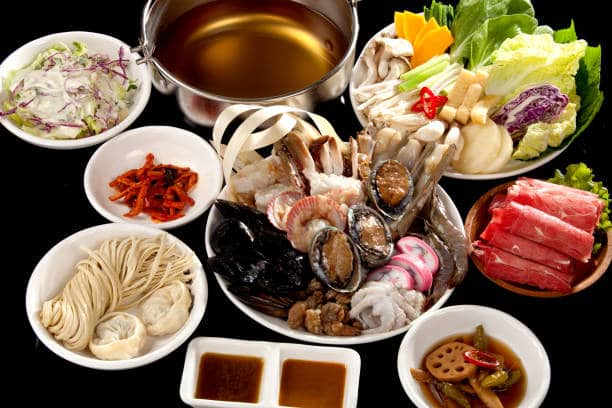
As one indulges in Gyeongsang’s culinary offerings, a captivating symphony of taste unfolds. Each bite is a note, carefully composed and arranged to deliver a multisensory experience. The region’s cuisine reflects not only its agricultural abundance but also its profound connection to nature, heritage, and the rhythm of life. In essence, Gyeongsang’s culinary heritage is a celebration of flavors in perfect sync. The spicy, salty, and umami elements collaborate in an intricate dance, painting a gastronomic masterpiece. This symphony of taste is more than a meal; it’s a journey through the essence of a region, an invitation to savor the past, present, and future through the language of food.

The Art of Balancing Flavors
Mastering Gyeongsang cuisine involves understanding the art of balancing flavors, as each dish strives for harmony among its diverse elements.
To truly master Gyeongsang cuisine is to grasp the delicate art of flavor balance, a journey where every dish aspires to achieve a harmonious coalescence of its multifaceted elements.
Hailing from the southeastern reaches of South Korea, Gyeongsang cuisine is a testament to the region’s culinary finesse. At its core lies the intricate dance of flavors, where spiciness, saltiness, and umami intertwine with subtlety and precision. Each dish is a canvas where the masterful chef wields flavors like an artist wields a brush. The first step toward this mastery is understanding the role of spiciness. Local peppers and spices lend a fiery vigor to Gyeongsang dishes, but it’s the artful control of this heat that sets the cuisine apart. The perfect amount of spiciness enhances without overwhelming, inviting diners to partake in an exhilarating taste experience.
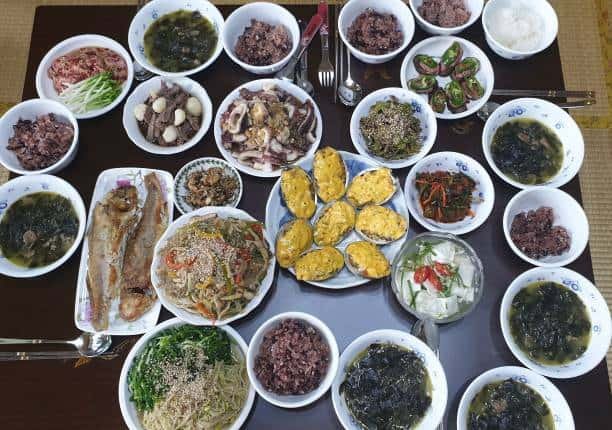
Equally essential is the judicious use of saltiness. In Gyeongsang cuisine, salt acts as a conductor, orchestrating the ensemble of flavors. It heightens the taste of each ingredient while maintaining a respectful distance, allowing other flavors to shine. The result is a symphony of tastes, where the gentle hum of salt underscores the crescendos of spice and umami. However, the pièce de résistance in Gyeongsang cuisine is the pursuit of umami, that elusive fifth taste. From the savoriness of fermented delicacies to the richness of meat and seafood, umami pervades the palate. Mastery lies in harnessing umami’s complexity and depth to elevate dishes, creating a layered experience that lingers long after the last bite.

Every plate that emerges from a Gyeongsang kitchen is a testament to the dedication to achieving culinary equilibrium. It’s a harmonious ballet of flavors, a culmination of tradition, innovation, and a deep respect for ingredients. Gyeongsang cuisine embodies a philosophy that acknowledges the value of each taste, highlighting their individual strengths while binding them into a chorus of flavor.
In essence, to master Gyeongsang cuisine is to grasp the essence of balance—the balance that transforms a meal into an artistic expression, a journey that traverses the landscapes of taste. It’s an invitation to become a part of the flavor symphony, conducted by the skilled hands of Gyeongsang’s culinary artisans.
Cultural Influences: Connecting Food and Traditions
Gyeongsang’s cuisine isn’t just about taste—it’s a cultural reflection, a bridge connecting generations and traditions. Gyeongsang’s cuisine transcends mere taste; it embodies a profound cultural reflection, serving as a bridge that elegantly connects generations and preserves time-honored traditions.

As one savor the flavors of Gyeongsang, they are immersed in the heritage of the land. The recipes passed down through the ages are not just culinary instructions; they are whispered tales of resilience, celebration, and the everyday lives of those who came before. Each ingredient chosen, each spice balanced, carries with it the weight of generations. Gyeongsang’s cuisine is a bridge that spans time. It links the contemporary diner with ancestors who toiled over the same recipes centuries ago. As the flavors dance on the palate, they forge a connection, a visceral understanding of the past that words alone could never convey.

Beyond taste, Gyeongsang’s cuisine fosters a sense of community. It’s an invitation to gather around tables and share not just food but the wisdom of traditions. From bustling street stalls to family gatherings, these dishes are vessels of togetherness, a means to weave bonds that stretch across ages. In an ever-evolving world, Gyeongsang’s cuisine remains a steadfast anchor to its heritage. It’s a reminder that as times change, there are aspects of culture that endure, nourishing both body and soul. As one delves into the flavors of Gyeongsang, they become a part of this rich legacy, a link in a chain that stretches far back and promises to continue into the future.
Ultimately, Gyeongsang’s cuisine is a testament to the power of food as a cultural conduit. It’s a reminder that a single bite can carry the weight of history and the promise of continuity—a cuisine that not only tantalizes the taste buds but also nurtures the soul.

Rituals and Celebrations: The Role of Gyeongsang Cuisine
From ancestral rituals to festive celebrations, Gyeongsang’s dishes play a pivotal role in bringing communities together and honoring tradition.
Ancestral rituals find their heart in the flavors of Gyeongsang. Dishes prepared for these sacred occasions are imbued with reverence and respect, embodying the spirits of those who came before. Each ingredient is a symbol, each flavor a testament to the continuity of tradition. As families gather to partake in these dishes, they not only remember their ancestors but also forge bonds that reach across time.
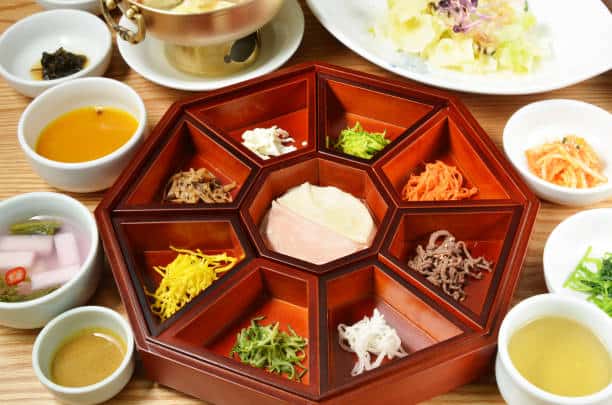
Equally significant are the festive celebrations that dot the calendar. Gyeongsang’s cuisine takes center stage during these lively events, uniting communities in shared feasts. From the spicy notes of kimchi to the comforting warmth of stews, these dishes evoke a sense of togetherness that transcends mere sustenance. They are an invitation to celebrate life, culture, and the simple joy of coming together.
2024 Ice Palace New Year’s Eve Countdown Party at Some Sevit Floating Island (Dec 31)Gyeongsang’s dishes are bearers of stories, each bites a chapter in the region’s narrative. As locals and visitors savor these flavors, they become part of living history, participants in a tradition that has endured through triumphs and trials.
From Street Food to Fine Dining: Gyeongsang’s Culinary Scene
The culinary landscape of Gyeongsang encompasses everything from humble street food to elevated fine dining experiences. At its core lies the essence of authenticity—whether found in the bustling street markets or the refined ambiance of upscale restaurants.
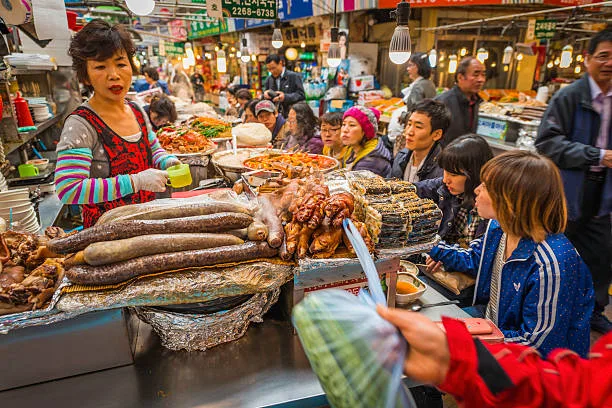
Street food in Gyeongsang is a sensory adventure. The narrow alleys are adorned with stalls offering an array of delectable treats. From sizzling skewers of spicy tteok-bokki to the comforting warmth of odeng, these humble bites carry an essence of tradition and comfort. The bustling atmosphere, combined with the aromatic symphony of sizzling ingredients, creates an experience that resonates with locals and visitors alike.

Satisfying Cravings: Gyeongsang Street Food
Streets come alive with the sizzle of pans and the aroma of sizzling delicacies. Gyeongsang’s street food satisfies cravings and offers a quick glimpse into its culinary heritage.
On the other end of the spectrum are the elevated fine dining experiences that pay homage to Gyeongsang’s culinary heritage with a contemporary twist. Renowned chefs draw inspiration from the region’s time-honored recipes, transforming them into edible art that tantalizes both the taste buds and the eyes. The presentation is meticulous, and each dish is a celebration of flavors and innovation, often incorporating the essence of local ingredients.

Between these two extremes lies a diverse range of dining options, each with its own story to tell. From cozy family-run eateries serving generations-old recipes to modern bistros reimagining tradition with a modern flair, Gyeongsang’s culinary scene is a mosaic of flavors and experiences that cater to all palates.
Elevating the Experience: Fine Dining in Gyeongsang
Fine dining in Gyeongsang is a symphony of flavors, a meticulous arrangement of signature dishes presented with elegance and finesse.
Fine Dining in Gyeongsang unveils a world where culinary artistry intertwines with cultural heritage. This gastronomic journey transcends mere sustenance, guiding diners through an exploration of flavors, textures, and stories that have been nurtured over generations.
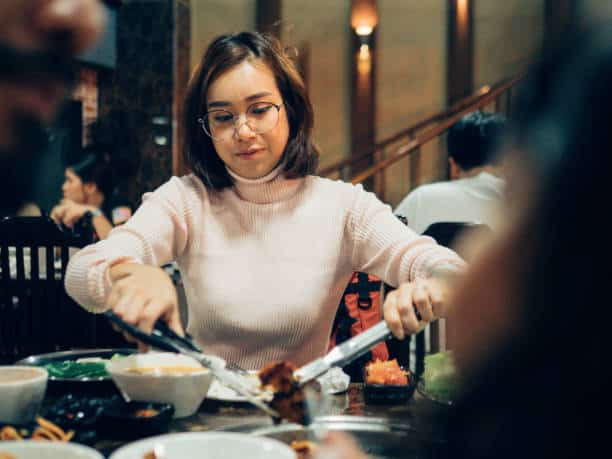
Gyeongsang’s fine dining scene is a harmonious blend of tradition and innovation, where master chefs meticulously craft dishes that reflect the region’s soul. Each plate is a canvas painted with locally sourced ingredients, skillfully prepared to honor the land’s richness. From the intricate marbling of grilled meats to the delicate arrangement of vibrant vegetables, every detail carries the weight of history and reverence.
In these dining establishments, flavors are not just tasted; they’re felt. Gyeongsang’s signature dishes are reimagined with contemporary twists, paying homage to the past while embracing the present. The artful presentation narrates stories of the land, sea, and culture, inviting diners to savor not only the taste but also the essence of the region.
As conversations flow and laughter echoes, fine dining in Gyeongsang becomes a communal celebration. It’s a chance to honor the craftsmanship of the culinary artisans and the legacy they uphold. Through each meticulously curated dish, diners are transported on a sensory voyage, deepening their connection to Gyeongsang’s culinary heritage and creating indelible memories of a truly elevated experience.
Cooking Techniques: Mastery and Skill in Every Dish
Gyeongsang’s culinary heritage is a testament to the mastery and skill embedded in its cooking techniques.
Gyeongsang’s culinary tradition is a testament to the mastery of cooking techniques, where skill infuses every dish with cultural significance. From the bustling street food stalls to the elegant dining tables, the province’s cuisine is a symphony of flavors orchestrated by expert hands. The techniques employed, whether in fermenting kimchi or grilling succulent meats, are an ode to ancestral wisdom passed down through generations. These methods transform simple ingredients into culinary delights, evoking a sense of timelessness and connection to the region’s heritage.
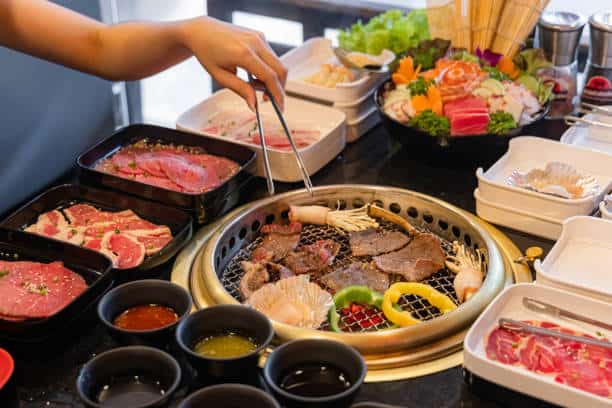
With each slice, chop, and stir, Gyeongsang’s culinary artists demonstrate their expertise, creating dishes that resonate with both locals and visitors, capturing the essence of tradition and innovation in every unforgettable bite.
Fermentation: A Time-Honored Technique
Fermentation is at the heart of Gyeongsang’s culinary traditions, transforming ingredients and imbuing them with complexity.
Fermentation lies at the core of Gyeongsang’s culinary heritage, infusing ingredients with a captivating complexity. This ancient technique is an alchemical process where time and nature collaborate to create culinary magic.

From the pungent depths of soybean-based doenjang to the fiery richness of kimchi, fermentation transforms ordinary elements into extraordinary flavors. It’s a patient dance between microorganisms and time, producing tastes that are at once familiar and enigmatic. Gyeongsang’s embrace of fermentation is a tribute to the wisdom of the past, allowing ingredients to age gracefully while unveiling layers of taste that tell stories of tradition and innovation. This culinary symphony of tanginess, umami, and depth reflects a culture that reveres the past while savoring the present. Fermentation isn’t just a process—it’s a legacy, a celebration of nature’s transformative power, and a testament to the region’s enduring connection to its roots.
Mastering the Grill: Gyeongsang’s BBQ Culture
The art of grilling is a culinary heritage in itself, showcasing the region’s reverence for fire and its transformative power.
Mastering the grill is an art deeply ingrained in Gyeongsang’s culinary fabric, shaping a vibrant BBQ culture that embodies both technique and tradition. The sizzle of meats meeting flames, the intoxicating aroma of marinated cuts—these are the elements that bring communities together around crackling grills.
Gyeongsang’s BBQ culture isn’t just about cooking food; it’s about embracing the alchemy of fire and flavor. Expertly marinated cuts, often showcasing the region’s dedication to local ingredients, are transformed into charred masterpieces that tell tales of centuries-old techniques.
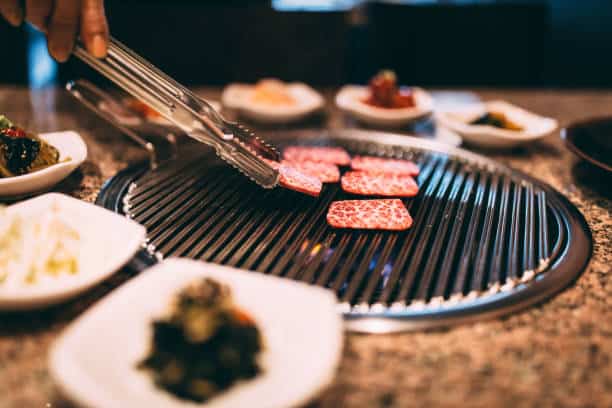
From the communal gatherings of friends and families to the bustling eateries that line the streets, the grill is a centerpiece of social bonding and culinary excellence. It’s a culinary ritual passed down through generations, reflecting the region’s respect for heritage and the camaraderie that flourishes over a shared meal.
In Gyeongsang, the grill isn’t merely a cooking tool; it’s a symbol of connection, a conduit for tradition, and a canvas for the culinary creatives who orchestrate a symphony of tastes with every carefully tended flame.
Local Ingredients: Farm-to-Table Freshness
Gyeongsang’s commitment to using local ingredients connects the diner with the land, offering farm-to-table freshness and a genuine taste of the region.
Local ingredients are the heartbeat of Gyeongsang’s culinary excellence, embodying the essence of farm-to-table freshness that defines the region. From lush fields to bountiful waters, Gyeongsang’s landscapes yield a rich tapestry of produce that grace its tables.
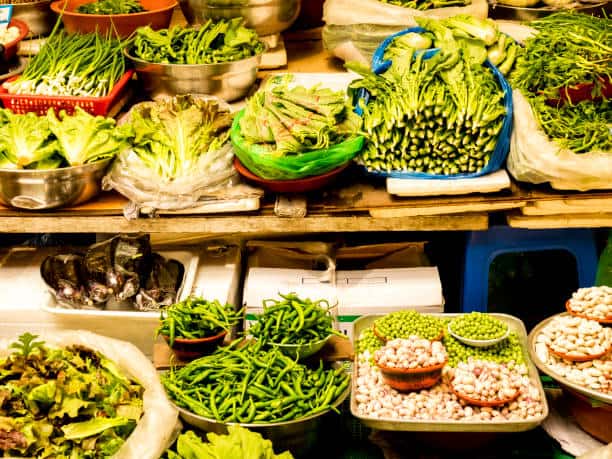
The commitment to using local ingredients is a testament to Gyeongsang’s reverence for nature’s gifts and a dedication to authenticity. As ingredients travel minimal distances from source to plate, their flavors are preserved at their peak, infusing dishes with a vitality that’s palpable.
From the succulent seafood harvested from nearby shores to the vibrant array of vegetables cultivated in its fertile soils, Gyeongsang’s reliance on local abundance highlights its deep connection to the land. The result is an elevated culinary experience that not only tantalizes the taste buds but also pays homage to the hands that cultivate and nurture these ingredients.
With each bite, diners partake in a journey through Gyeongsang’s terroir, tasting the purity of its ingredients and feeling the pulse of the region’s culinary heartbeat.
Farming and Foraging: The Source of Authenticity
The authenticity of Gyeongsang’s cuisine is rooted in the relationship between farmers, foragers, and the ingredients that grace the plate.
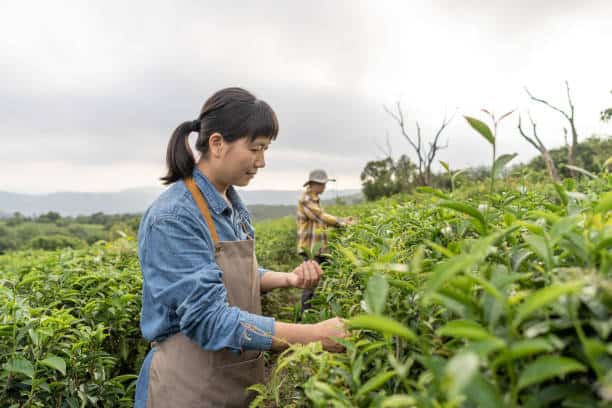
Farming and foraging form the bedrock of authenticity in Gyeongsang’s culinary heritage, breathing life into the region’s flavors with a deep-rooted connection to the land. The hands that till the soil and the gatherers who roam its forests contribute to the story told on every plate.
The act of farming, both meticulous and nurturing, yields the bounty that sustains Gyeongsang’s culinary identity. From rice paddies that paint the landscape to orchards heavy with fruits, the commitment to cultivating local ingredients is the essence of true authenticity.
Equally significant is the practice of foraging, where the knowledge passed down through generations leads to the discovery of wild treasures. From mountain greens to fragrant herbs, foraging encapsulates the harmony between humanity and nature.
In Gyeongsang, farming and foraging are not just practices; they’re traditions that infuse each dish with the rhythm of the seasons and the spirit of the people. The authenticity found in these ingredients harks back to a time when the relationship between humans and the land was unbreakable—a legacy that lives on with every bite.
Gyeongsang Desserts: Sweet Endings to Savory Meals
Every meal is concluded with a touch of sweetness, as Gyeongsang’s desserts offer a delightful contrast to its savory flavors.
Gyeongsang’s desserts are the enchanting finale to a symphony of savory flavors, weaving a thread of sweetness that lingers long after the last bite. These confections, while seemingly separate from the region’s savory cuisine, are an integral part of its culinary tapestry, embodying a delicate balance between tradition and innovation.
Yaksik: A Nutty and Sweet Rice Cake
Yaksik, a medley of flavors and textures, is a celebration of nuts, dried fruits, and sticky rice, culminating in a harmonious dessert.

Yaksik: This nutty and sweet rice cake is a timeless creation, a harmonious blend of rice, jujubes, nuts, and honey that creates a dance of textures and flavors. It’s a reminder of Gyeongsang’s agrarian roots and a testament to the resourcefulness of the past.
Gyeongju Bread: A Delicate Pastry with a Story
Gyeongju bread carries the tale of an ancient city, its layers representing the layers of history that make up the region’s past.

Gyeongju Bread: Delicate and rich, Gyeongju bread is a pastry that tells the story of an ancient city. Its layers, akin to the layers of history, unfold with every bite, revealing sweet fillings that are the culmination of artistry and taste.
Food and Community: Bringing People Together
Gyeongsang’s culinary heritage is more than just sustenance; it’s a vessel for fostering connections and creating lasting memories.
Gyeongsang’s culinary heritage transcends mere sustenance; it emerges as a vessel that nurtures connections and weaves enduring memories. Each dish, infused with tradition and care, becomes a conduit for forging bonds among families, friends, and communities.

In homes, the act of sharing meals becomes a ritual that binds generations together. Elders impart stories of the past, passing down recipes as heirlooms of culture. The younger generation learns not just the art of cooking but also the essence of their heritage.
Beyond homes, communal gatherings and celebrations are woven around Gyeongsang’s cuisine. The act of sitting down together, savoring the same flavors, and engaging in laughter, deepen ties and builds a sense of belonging.
Sharing Love Through Food
Food is a language of love in Gyeongsang, with every dish an expression of care, passed from one hand to another.
In Gyeongsang, food is the eloquent language of love, with each dish serving as a heartfelt expression of care and affection, passed down from one set of hands to another. The act of preparing and sharing food is a profound gesture that transcends words, embodying the warmth of relationships and the nurturing of bonds.

In every meticulously crafted dish, there’s an unspoken narrative of dedication, where ingredients are chosen with thought, flavors are balanced with precision, and recipes are executed with reverence. When shared, these dishes become a tangible representation of love, a gesture that communicates not only sustenance but also a deep understanding of what brings joy to others.
Gyeongsang’s culinary culture thrives on this language of love, where meals become a conduit for emotions, stories, and traditions. Whether it’s a family gathering, a celebration, or a quiet moment of connection, the food that graces the table speaks volumes, echoing the sentiment that every bite is an embodiment of affection shared from one heart to another.
Modern Twists: Fusion Cuisine in Gyeongsang
As Gyeongsang’s culinary heritage evolves, modern twists and fusion cuisine breathe new life into traditional recipes.
Embracing modernity, Gyeongsang’s culinary scene ingeniously weaves traditional treasures into contemporary creations. Fusion cuisine breathes new life into age-old recipes, marrying the familiar with the innovative. These culinary alchemists infuse Gyeongsang’s flavors with global influences, crafting dishes that pay homage to the past while delighting in the present. The result is an exquisite tapestry of tastes that invites both locals and visitors to experience Gyeongsang’s heritage in a refreshingly modern light.
Traditional Roots, Contemporary Flair
The fusion of tradition and innovation keeps Gyeongsang’s culinary heritage vibrant, appealing to both the old and the new.
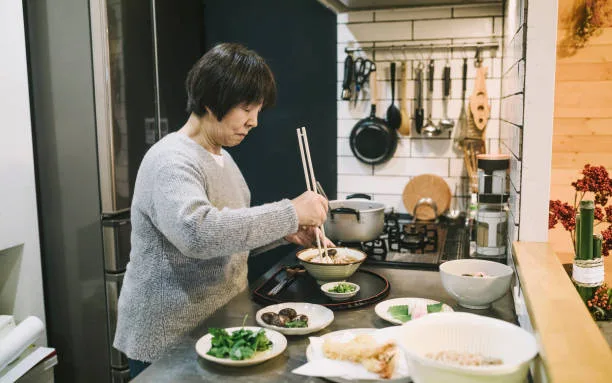
Traditional roots, contemporary flair—Gyeongsang’s essence is woven from time-honored practices and a modern twist. This captivating blend encapsulates the region’s deep heritage while embracing the dynamism of the present. Through dishes that honor tradition yet resonate with innovation, Gyeongsang captivates the senses and showcases a harmonious coexistence of old and new.
Health Benefits: Nutrient-Rich Goodness
Beyond its flavors, Gyeongsang’s cuisine offers a wealth of health benefits, a testament to the wisdom embedded in its ingredients and techniques.
Beyond its flavors, Gyeongsang’s cuisine is a treasure trove of health benefits—a testament to the wisdom interwoven into its ingredients and techniques. From nutrient-rich herbs to balanced preparation methods, each dish is a harmonious fusion of taste and wellness, reflecting the region’s holistic approach to nourishment. Gyeongsang’s culinary legacy not only delights the palate but also nurtures the body, embodying the belief that food is both sustenance and medicine.
Nutritional Wisdom Passed Down
Gyeongsang’s culinary heritage imparts not only taste but also generations’ worth of nutritional wisdom, contributing to well-being.
Gyeongsang’s culinary heritage imparts more than just flavors; it carries generations’ worth of nutritional wisdom that enriches overall well-being. Rooted in the region’s cultural ethos, each dish is a vessel of nourishment, carefully designed to offer not only taste satisfaction but also holistic health benefits. With an understanding of ingredients, preparation techniques, and their effects on the body, Gyeongsang’s cuisine becomes a conduit for longevity and vitality, demonstrating how food can be a source of both enjoyment and wellness.
Exploring Gyeongsang: A Culinary Adventure
Embarking on a journey through Gyeongsang’s culinary landscape is an adventure that immerses the senses and connects the heart to its traditions.
Embarking on a Gourmet Journey
With every bite and every aroma, we traverse the landscape of Gyeongsang’s culinary heritage, a journey that links us to the past, celebrates the present, and ensures a flavorful legacy for the future. Explore the extraordinary canvas of our service area—a captivating realm where homebuyers’ dreams become reality. This is where community thrives, where each street tells a tale, and where the charm of local life beckons. From the bustling markets to the tranquil parks, every facet of living is embraced with open arms. It’s not just a place to reside; it’s a way of life that entices and enchants.
FAQs about Gyeongsang Cuisine:
- What defines Gyeongsang Cuisine? Gyeongsang Cuisine is characterized by its robust and bold flavors, influenced by the region’s coastal location and fertile land. It emphasizes the use of local ingredients such as seafood, grains, and vegetables, combined with signature spices and seasonings. The cuisine is known for its diverse range of dishes, hearty stews, and fermented delicacies.
- Which dishes are must-tries in Gyeongsang cuisine? Some must-try dishes in Gyeongsang Cuisine include “Bibimbap,” a colorful mixed rice dish, “Bulgogi,” savory marinated grilled meat, and “Hoe,” a fresh raw fish preparation. Additionally, “Japchae,” “Haejangguk,” and “Ssiat Hotteok” are also highly recommended for their unique flavors and textures.
- How does Gyeongsang cuisine differ from other Korean regional cuisines? Gyeongsang Cuisine stands out with its robust and spicy flavors, influenced by its coastal location and agricultural abundance. While sharing some commonalities with other Korean regional cuisines, Gyeongsang dishes often have stronger and bolder tastes due to the prominent use of spices like gochugaru (red chili flakes) and garlic.
- Are there vegetarian or vegan options in Gyeongsang cuisine? While Gyeongsang Cuisine traditionally includes a variety of seafood and meat-based dishes, there are vegetarian and vegan options available. Dishes like “Dongnae Pajeon” (scallion pancake) and “Golbaengi-muchim” (spicy sea snail salad) can be enjoyed by those seeking plant-based choices.
- How has modernization impacted traditional Gyeongsang cooking methods? Modernization has brought changes to traditional Gyeongsang cooking methods. While some aspects, like fermentation and pickling, remain integral, technological advancements have streamlined preparation techniques. Additionally, there’s a trend towards fusion cuisine, where traditional Gyeongsang flavors are combined with contemporary culinary approaches to create innovative dishes.
Feel free to explore Gyeongsang Cuisine’s rich history, flavors, and cultural significance as you embark on a culinary journey through the vibrant and diverse dishes of the region.


Can you be more specific about the content of your article? After reading it, I still have some doubts. Hope you can help me.
I’m sorry for the confusion, However, if you can provide me with some details or questions you have regarding the topic you’re interested in, I’d be more than happy to try to help you address your doubts or provide further clarification. Just let me know what you’re curious about, and I’ll do my best to assist you!
I’d be happy to help clarify any doubts you have about the content of the article. Please feel free to share your specific questions or areas of confusion, and I’ll do my best to provide you with the information you need.